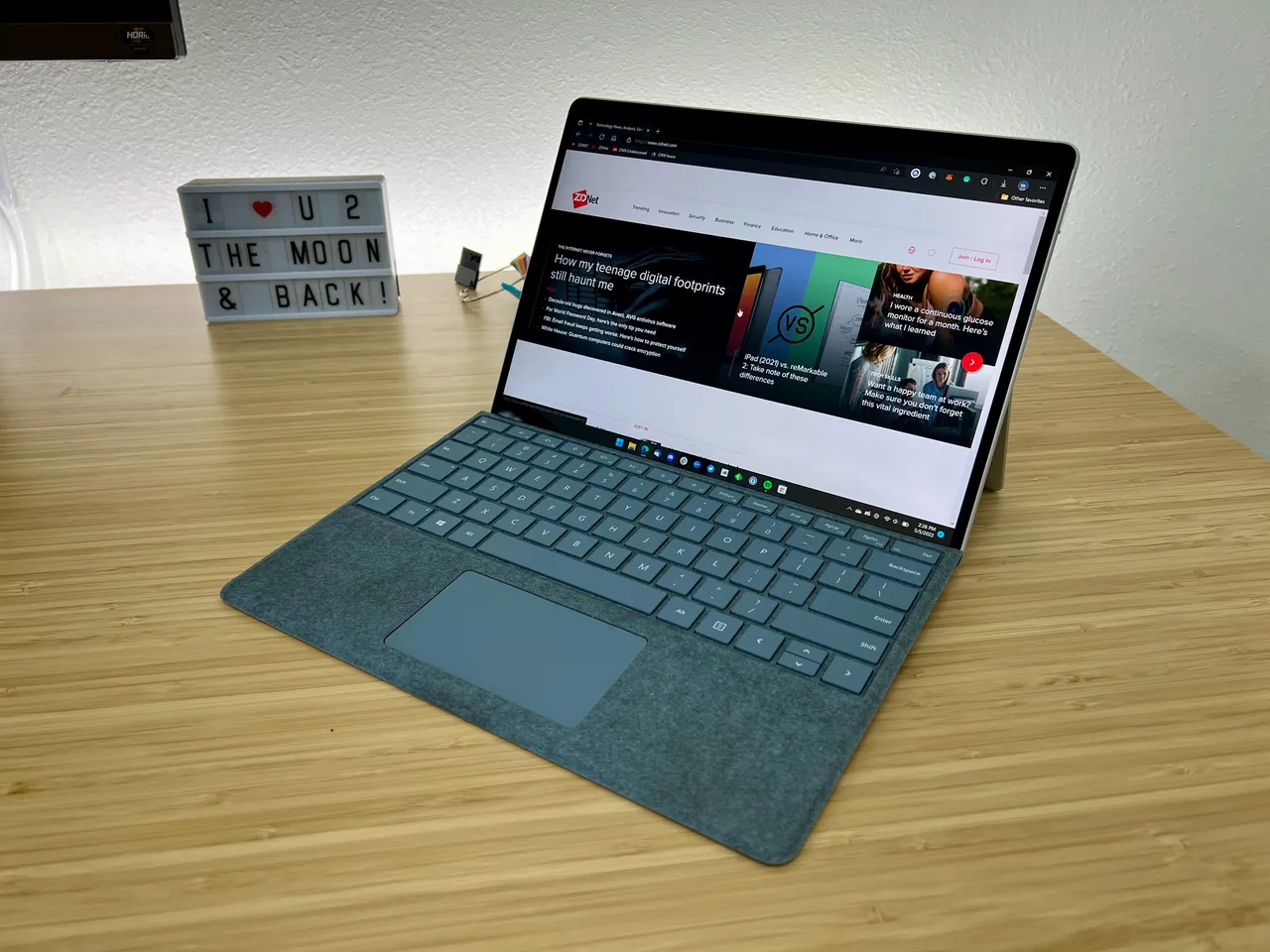In recent years, my work routine has been deeply intertwined with my iPad Pro. It’s been my go-to device for various tasks like writing, managing emails, and staying connected through communication platforms like Slack and Discord. However, despite its reliability, I’ve begun to feel the limitations of the iPad’s hardware and software ecosystem. The initial promise of features like Stage Manager, particularly when paired with an external display, has gradually diminished due to Apple’s removal of key functionalities like external monitor support, citing bugs and performance issues. This uncertainty has led me to explore alternatives, primarily Windows laptops, in search of a viable replacement for my iPad Pro.
Amidst this quest, I delved into testing the Microsoft Surface Pro 8 with LTE, a device not prominently featured on Microsoft’s main Surface store but available under the Surface Pro 8 for Business category. The LTE variant adds a layer of connectivity convenience, allowing users to stay productive on the go. Available through Microsoft Business or select retailers, such as Verizon Wireless, this version caters to professionals seeking enhanced mobility and versatility.

Design and Features
Introduced in September 2021, the Surface Pro 8 boasts a design reminiscent of its predecessor, the Surface Pro X. While visually similar, the Pro 8 distinguishes itself with a slightly thicker profile. The PixelSense display offers a refresh rate of up to 120Hz, providing a responsive touch experience compatible with the Surface Pen.
Equipped with a built-in kickstand, the Pro 8 offers flexibility in adjusting viewing angles, facilitating activities like drawing and writing with the Slim Pen 2. Connectivity options include two Thunderbolt 4 ports, a Surface Connect port, and a 3.5mm headphone jack, ensuring seamless integration with various peripherals.
Above the display, a 5-megapixel camera and facial recognition hardware enable convenient authentication via Windows Hello. Additionally, the device features a user-accessible SSD storage slot and a SIM card slot, supporting both physical and eSIM configurations for cellular connectivity.

Performance and Productivity
Powered by an 11th Generation Intel Core i7 processor, 16GB of memory, and a 256GB SSD, the Surface Pro 8 delivers robust performance suitable for professional workflows. Running Windows 11 Pro, the device offers compatibility with a wide range of applications and productivity tools.
Despite claims of up to 14 hours of battery life, real-world usage may vary. Enabling the 120Hz refresh rate impacts battery longevity, albeit marginally. Additionally, the presence of a fan suggests active cooling mechanisms, ensuring sustained performance under demanding workloads.
Connectivity options, including Thunderbolt 4 support, enable seamless integration with external displays and peripherals, enhancing productivity for multitasking scenarios. Unlike the iPad Pro’s mirrored display output, the Pro 8 offers native support for extended desktop configurations, optimizing workflow efficiency.

Comparison with iPad Pro
While the Surface Pro 8 excels in versatility and productivity, the iPad Pro retains certain advantages, particularly in its optimized tablet experience and ecosystem integration. Apple’s Mail app, iCloud services, and streamlined interface contribute to a seamless user experience, albeit with limited multitasking capabilities compared to Windows.
Moreover, the iPad Pro’s consistent performance and touch-first interface cater to users prioritizing simplicity and reliability. However, the Surface Pro 8’s full-fledged operating system and flexible hardware configurations offer a compelling alternative for users seeking a comprehensive computing experience.

Conclusion
In conclusion, the Surface Pro 8 emerges as a formidable contender in the realm of productivity-focused devices. With its blend of performance, versatility, and connectivity options, it caters to professionals navigating diverse work environments. While the iPad Pro retains its appeal for users prioritizing simplicity and ecosystem integration, the Surface Pro 8 offers a compelling alternative for those seeking a full-fledged computing experience.
Whether opting for the Surface Pro 8 or the iPad Pro, users must consider their specific workflow requirements and preferences. Both devices offer unique strengths and capabilities, ensuring that users can make an informed decision based on their individual needs. Ultimately, whether opting for the versatility of the Surface Pro 8 or the streamlined experience of the iPad Pro, users can expect a reliable companion for their professional endeavors.